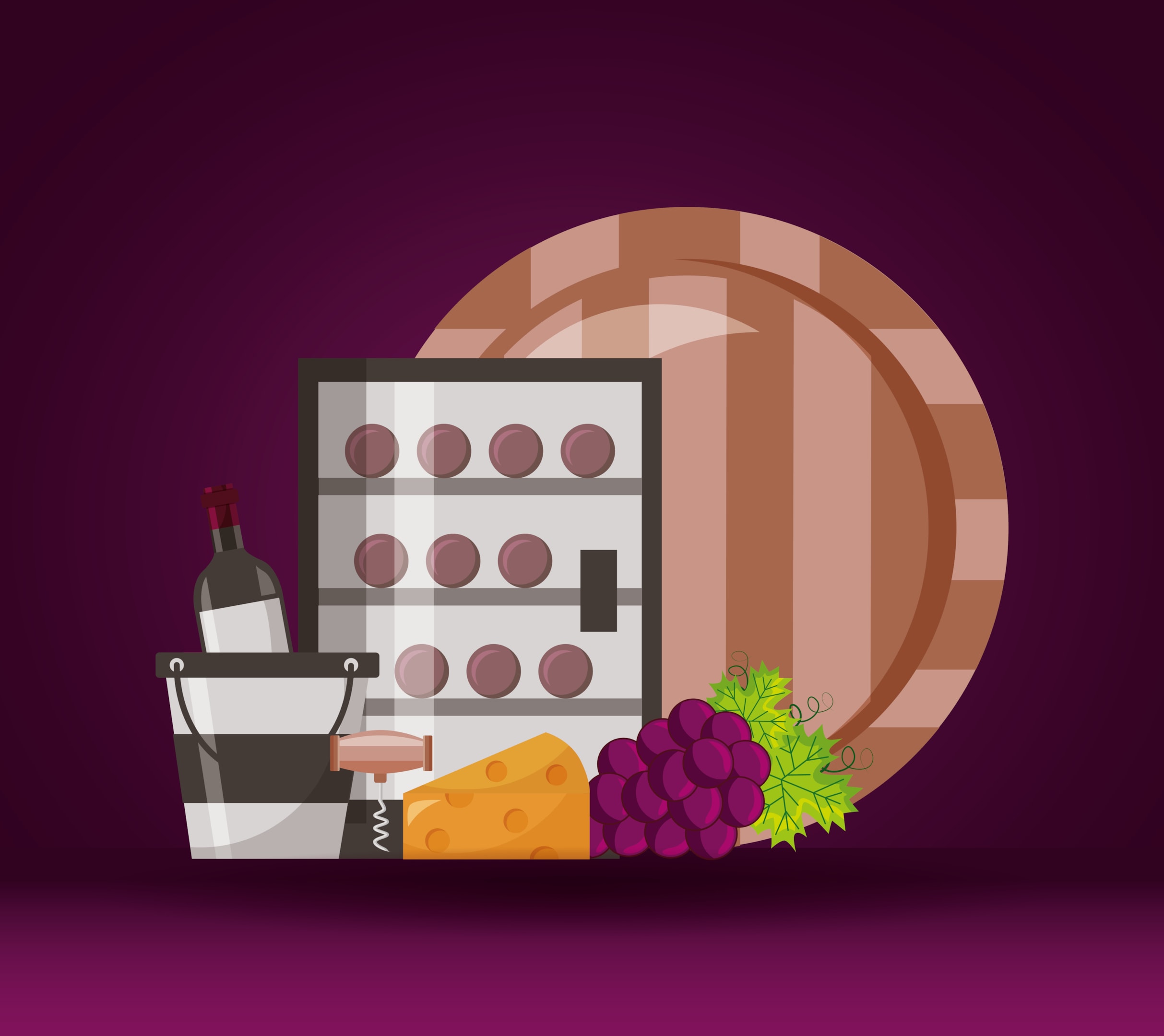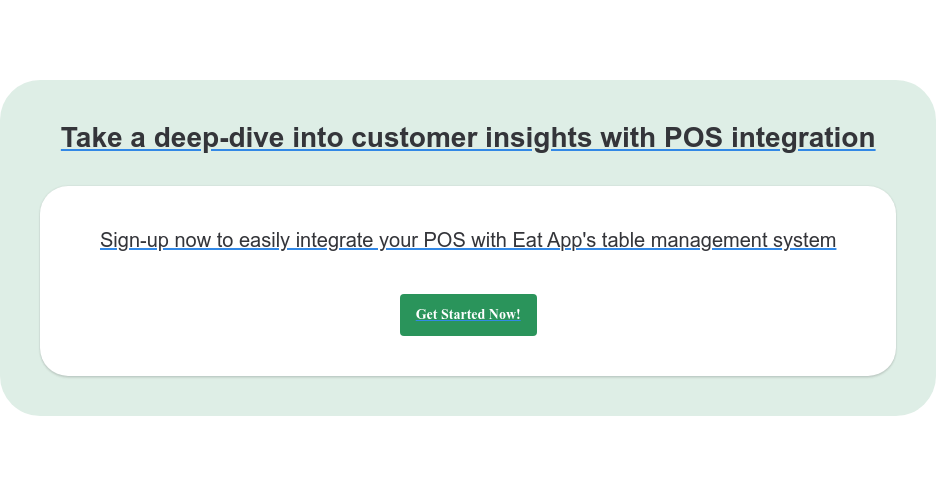Picture this scenario: a guest arrives at a restaurant. His name is John, he reserved a table for his wife and two more people at 1:30 pm through the website.
John has, in fact, VIP status at that establishment. He made a booking for the first time six months ago, and this is his sixth visit since then. He never brings less than two guests with him. What makes him a VIP, though, is that with his previous reservations, he has spent $1,387 in total, with $73 per cover spent on average.
How is it possible for a restaurant to know a customer so well?
The answer is POS integration.
What is POS Integration?
In recent years, the restaurant industry has gone from being wary of digitalization to embracing technology. Restaurants now have tools to help them manage all aspects of front and back of house: reservations, staff, inventory, loyalty programs, take-out, and delivery to name a few.
-2.webp?width=782&height=440&name=Untitled%20design%20(14)-2.webp)
While this allows them to do more with less, it has also created situations where they have four or five independent technology solutions operating independently. However, when two applications share data with each other, you can connect the dots and have access to a much wider picture.
In John’s example, it’s thanks to the integration of POS data with the reservation management system that helps the restaurant knows how much John has spent during his past visits.
Indeed, these two tools complement each other perfectly.
>>> Learn more about Eat App's POS Integration here.
Now, let's take a look at the 10 POS integrations that will help boost efficiency at your restaurant:
1. Guest loyalty app
Through a loyalty app that links with your POS, you can draw in more recurring consumers. With the help of loyalty programs, your clients can either earn points toward incentives or get a certain percentage off each time they make a purchase at your establishment. These apps appeal to the younger generation, which loves to download and use apps and give your clients a wonderful incentive to frequently choose your restaurant.
Strong loyalty app programming can also offer time-limited messages and automatic messages for discounts, as well as ways to integrate them into the applications.
2. A discovery app
Yelp, Zagat, Eat App, and TripAdvisor are just a few of the apps that may help hungry customers find their next meal. These applications are often used by young diners to locate the best restaurants near them or while they are traveling. Make sure your location is highly ranked on mobile restaurant applications to attract customers. Promote these applications in-person and invite your clients to share reviews and images.
3. Online ordering
Your customers can place a pickup or delivery order from their phone or tablet with the help of online ordering apps. It can be simpler to buy food and items by using online ordering apps, which can be set up either through a point-of-sale system or as a standalone self-ordering kiosk.
4. Table management platforms
If you want to improve customer service, reservation, and table management integration is essential for restaurants, especially for venues that are busy and have extensive waiting lists and plenty of tables.
Customers can use reservation apps, like Eat App to make, edit, and cancel reservations without involving your personnel. Order timing, appropriate seating timing, and kitchen workloads can all be improved with automatic table management and tracking. Additionally, this enhances your staff's capacity to offer superior customer service.
Watch the video here.
5. HR & staffing apps
Now, staffing and human resources apps enable prospective employees to apply, onboard, and maintain a virtual timecard. Human resources is no longer a world of mountains of paper; tracking the I-9, tax forms, and perks can all be done in these capable apps. Even while not all components of HR may be fully integrated with your POS, reports from the apps can be loaded (and vice versa). The most recent apps will incorporate both payroll and timekeeping procedures.

6. A scheduling tool
It's no surprise that employment in the restaurant business is sporadic. Nothing is more tedious than planning an employee's schedule week after week only to discover a server is about to request time off or is approaching overtime. Regardless of how experienced you are with schedules, mistakes still occur. With connectors that log time-off requests, track extra hours, and make it simple for workers to switch shifts, you can eliminate scheduling errors and boost efficiency. By removing scheduling conflicts, your restaurant can maintain a sufficient staff without any hassles, giving you more time to concentrate on providing excellent customer service.
7. Revenue loss protection
Free drinks, unnecessary comps, and slack inventory may appear to be little losses at first, but over time, these poorly managed mistakes may mount up and cost your company a lot of money. Unfortunately, staff error or theft accounts for the majority of losses. Fortunately, this may be avoided with an integrated tracking system.
Robust reporting procedures are removed by using safe point-of-sale accounting software like QuickBooks, which reports revenue costs, losses, and profits in real-time. Instead, these cloud-based features control real-time inventory adjustments, register balances, and transactions. Implementing a POS system with integrated loss prevention and security measures helps maintain accurate inventory management, boost staff morale, and maintain your company's profitability.
8. Personalized marketing
A POS and a loyalty app can simply be combined to geo-fence marketing materials like today's promotions (restrict them to a certain area). Customers inside or outside of the geo-fence can receive personalized messages through the loyalty app itself, depending on their preferences. For instance, if a consumer is at another business nearby your restaurant and hears about a promotion, they could be more inclined to stop by for a snack and cup of coffee that afternoon.
9. Remote management tool
Any restaurant owner can improve the appearance of their establishment by abandoning their clunky outdated equipment and switching to an Android tablet or iPad to take orders and process payments. The flexibility to administer remotely is just another fantastic advantage of POS apps. With POS apps, you can visit a cloud-based control panel from anywhere you have an internet connection and examine your reports there.
10. A menu management app
By integrating your menu management tool, you may design custom icons that can be color-coded based on significant health issues, such as allergies, diabetes, high-sodium, or low-calorie selections. Employees can communicate with customers about menu item ingredients more effectively by using icons that can rapidly identify and categorize.
.webp?width=782&height=440&name=Untitled%20design%20(26).webp)
Additionally, administrators can save comments about specific meals in the interface, such as substitutions and recipes, which helps to streamline service. With an open API, you are in control and don't have to wait for updates from your software supplier to grow your business.
Get the essential POS integrations for restaurants
Start with your POS provider now that you are aware of the extensive potential for POS restaurant integration. Numerous of the mentioned apps can occasionally be added as independent POS modules to a current POS service contract. Find out what potential your company has, and over time, expand on it as your budget permits.
If you're unsure of where to begin, focus on apps from the standpoint of the business function that causes you the most pain. Consider working with your current vendor (or a new vendor) who will take the time to describe the app, the integration, and the best way to implement the integration. Ask bold questions regarding ROI and what best practices are for the apps you choose to integrate.
>>>Want to know more? Reach out to one of our consultants today.















-1.png?width=1812&height=1072&name=TripAdvisor%20%26%20More%20Bookings%20(1)-1.png)
-2.png?width=1812&height=1072&name=Google%20Bookings%20(1)-2.png)


-1.png?width=200&name=TripAdvisor%20%26%20More%20Bookings%20(1)-1.png)
-2.png?width=200&name=Google%20Bookings%20(1)-2.png)
-1.png?width=200&name=Instagram%20Bookings%20(1)-1.png)
-1-png.webp?width=200&name=Facebook%20Integration%20Rectangle%20(1)-1-png.webp)







.webp?width=200&name=download%20(1).webp)
%20(1)-2.webp?width=200&name=Eat%20(34)%20(1)-2.webp)
%20(1)-2.webp?width=200&name=Eat%20(18)%20(1)-2.webp)










%20(1)-1.webp?width=314&height=175&name=Eat%20(62)%20(1)-1.webp)


.webp?width=144&height=72&name=Eat%20App%20Logo%20(3).webp)